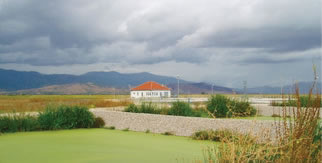
Environmental Science and Engineering
Modeling Onsite Wastewater Systems at the Watershed Scale: A User’s Guide
Publication Date: June 2009
Cooperating Institution: Colorado School of Mines
Principal Investigator: John McCray
Project Budget: $407,600
Project Identifier: 04-DEC-6
DESCRIPTION
This research provides guidance for conducting watershed-scale modeling assessments and decision making associated with onsite wastewater system (OWS) pollutants, with a focus on nitrogen and phosphorus. The researchers discuss fundamental modeling concepts and philosophy and summarize fundamentals of hydrology and pollutant transport related to OWS. They describe mass-balance screening models and GIS screening models, as well as complex numerical models that include groundwater models, vadose-zone models, surface-water models, and integrated watershed models. They provide guidance on model selection, obtaining model input and calibration data, model parameterization, model-sensitivity analysis, model calibration, and long-term model care. They describe use of model results for risk-based decision making. Case studies demonstrate how the methodologies presented in the guide are applied, and demonstrate the use of models to evaluate alternative watershed-management scenarios. Reviews of GIS-screening models and watershed-scale models are included in the appendix.
Planners, regulators, modelers, OWS professionals, and hydrologists will find useful information in this guide. It is particularly useful to engineers who need to implement models for quantitative evaluations of OWS-related problems at the watershed scale, as well as to those people who seek to understand how models are used for watershed assessments and decision making.
Associated Documents:

